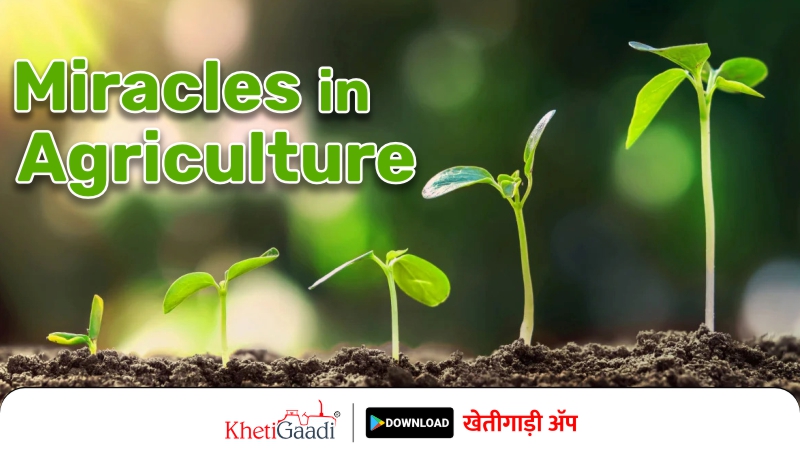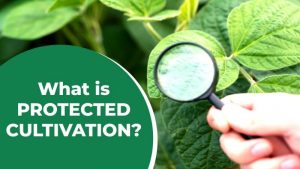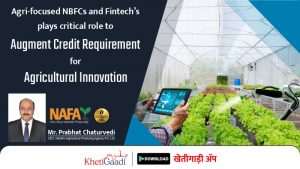Agriculture has undergone a lot of advancements and transformations over the years, and there have been several remarkable breakthroughs that could be considered miracles in the field. Here are a few examples:
Green Revolution
The Green Revolution was a period of significant agricultural productivity growth that occurred between the 1940s and 1960s. During this time, researchers developed new varieties of high-yielding crops, such as wheat and rice, that were resistant to diseases and pests and could produce more food per acre. This revolution transformed agriculture and helped alleviate hunger and poverty in many parts of the world, particularly in developing countries.
The Green Revolution was made possible by a combination of factors, including advances in plant breeding, irrigation systems, and the use of chemical fertilizers and pesticides. Scientists such as Norman Borlaug played a key role in developing new crop varieties that were able to resist diseases, pests, and environmental stresses. These crops also had shorter growing periods, which meant that they could be grown and harvested more frequently.
The Green Revolution had a significant impact on global agriculture and food production. It helped increase crop yields, reduce food shortages, and improve food security in many countries. However, the use of chemical fertilizers and pesticides also had negative impacts on the environment and human health. The Green Revolution is still a topic of debate, with some experts arguing that it only provided a temporary solution to food shortages, while others see it as a crucial step in improving global food security.
Precision Agriculture
Precision agriculture is an approach to farming that uses technology to optimize crop production and reduce waste. It involves collecting and analyzing data on soil conditions, weather patterns, and plant growth to make more informed decisions about when and where to plant, fertilize, and irrigate.
Precision agriculture uses a variety of technologies, such as GPS, sensors, and drones, to collect data. This data is then analyzed using software and algorithms to generate recommendations for farmers. For example, a farmer could use precision agriculture to determine the ideal time to plant a particular crop based on soil moisture levels, temperature, and other factors.
One of the key benefits of precision agriculture is that it allows farmers to optimize crop yields while reducing waste. By applying fertilizers and pesticides only where they are needed, farmers can reduce their use of these inputs and minimize their impact on the environment. Precision agriculture can also help farmers save water by ensuring that irrigation is targeted only to areas where it is needed.
Another advantage of precision agriculture is that it can help farmers save time and money. By automating certain tasks, such as planting and fertilizing, farmers can reduce their labor costs and increase their efficiency. Precision agriculture can also help farmers minimize their risk by providing more accurate data and predictions about crop yields, allowing them to make better-informed decisions.
Biotechnology
Biotechnology has played a significant role in improving the efficiency, sustainability, and productivity of agriculture. Some of the major applications of biotechnology in agriculture include:
Genetic engineering of crops: Biotechnology has enabled the modification of plant genomes to produce crops with desirable traits such as increased resistance to pests and diseases, improved yields, and enhanced nutritional content. Genetic engineering has also been used to develop crops that are more tolerant to environmental stress such as drought, cold, and heat.
Development of biofertilizers: Biotechnology has enabled the development of biofertilizers, which are microorganisms that help to improve soil fertility and plant growth. These microorganisms can fix nitrogen from the atmosphere, solubilize phosphorus, and produce plant growth-promoting substances.
Production of transgenic animals: Biotechnology has enabled the development of transgenic animals that can produce more meat, milk, or eggs, or that are resistant to certain diseases. These animals can help to improve the efficiency and sustainability of livestock production.
Development of precision agriculture: Biotechnology has enabled the use of precision agriculture, which involves the use of sensors, GPS mapping, and other technologies to optimize crop yields, reduce waste, and minimize environmental impact.
Bioremediation: Biotechnology has enabled the use of microorganisms to clean up polluted soils and waterways, which can help to restore ecosystems and improve the sustainability of agriculture.
Biotechnology has the potential to improve the efficiency and sustainability of agriculture, while also reducing the environmental impact of farming practices. However, it is important to ensure that the use of biotechnology is safe and that its benefits are distributed equitably across different sectors of society.
Vertical Farming
Vertical farming is a type of agriculture that involves growing crops in vertically stacked layers, using artificial lighting, controlled temperature and humidity, and a nutrient-rich solution instead of soil. This technique allows for year-round crop production and reduces the need for water and pesticides, making it an environmentally sustainable way of growing food.
Vertical farms can be set up indoors or outdoors, and they can range in size from small, home-based systems to large, commercial facilities. They use a variety of technologies, such as hydroponics and aeroponics, to grow crops without soil. Plants are typically grown in trays or towers that are stacked vertically, and they are exposed to LED lights that mimic the sun’s light spectrum to promote healthy growth.
One of the main advantages of vertical farming is that it allows for higher crop yields per square foot of land than traditional farming. This is because crops can be grown in layers, with multiple layers stacked on top of each other. Vertical farming also reduces the amount of land required for farming, making it a useful solution for urban areas with limited space.
Another advantage of vertical farming is that it can reduce the amount of water needed to grow crops, as the nutrient-rich solution used in hydroponics is recycled and reused. Additionally, vertical farming eliminates the need for pesticides and other harmful chemicals, making it a safer and more sustainable way of producing food.
However, vertical farming also has some drawbacks. It requires a significant initial investment in equipment, such as LED lights and climate control systems, which can be expensive.
These are just a few examples of the many miracles in agriculture. As technology continues to advance, we can expect to see even more remarkable breakthroughs that will transform the way we produce and consume food.
Get information related to tractors, tractor prices, tractor videos, and tractor games; and visit the Khetiguru mobile application for farming-related updates.




